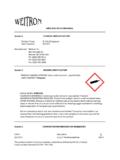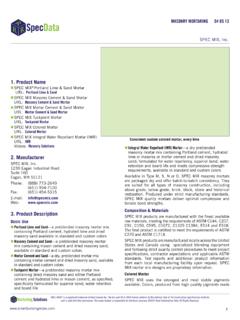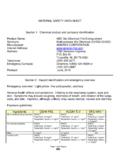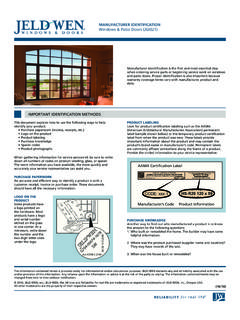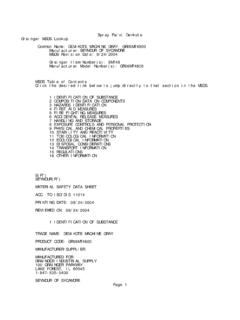Transcription of SECTION 1: MANUFACTURER, PRODUCT …
1 SECTION 1: MANUFACTURER, PRODUCT identification Manufacturer's name : Advanced Protective Products Inc. Address: 187 Warren Street, Jersey City, NJ 07032 Information Phone: 201-435-6166. In (800) 255-3924 International: (813) 979-0626 Manufacturer's Duns No. 10-758-5838 PRODUCT name : RUST DESTROYER? PRODUCT Code: 999 Heat Resistant up to 800oF Rust Converting Paint Primer. Chemical Family: Special Alkyd Emulsion Base Primer. HMIS CODE SARA TITLE 312 Health: 1 Acute: No Flammability: 2 Chronic: YesReactivity: 0 Fire: YesPersonal Protection: G React: No SECTION 2: INGREDIENTS, HAZARDOUS INGREDIENTS INGREDIENT MAX% CAS PEL STEL CEIL MM HG TEMPS toddard Solvent (f,n) 8052413 100 PPM100 PPM @ 20oC Silica Crystalline (f,*) 14808807.
2 1 N/A 11 Iron Oxide (f,*,n) 1309-37-1 5MG/M35MG/M3 N/A Calcium Carbonate(*) 1317-65-3 5MG/M3 N/A II Federal Regulatory Information: OSHA Status: this PRODUCT Is Hazardous under the Criteria of the Federal Osha Hazard Communication Standard 20 CFR 1910. 1200. TSCA Status: on TSCA Inventory. Cercla Reportable Quantity: None. Sara Title III: SECTION 302 Extremely Hazardous Substances: None SECTION 311/312: Hazard Categories: Non Hazardous under SECTION 311/312 SECTION 313: Toxic Chemicals: None f Federal Hazard List * Hazardous Only as Dust When PRODUCT Is Sanded. 3 SECTION 313 of the Emergency Planning & Community Right to Know Act of 1986 and of 40 CFR 372 n New Jersey Label Law Hazardous Chemical CAS REGISTRY# %W %V CHEMICAL name (S) CARCINOGEN LISTING IN NTP, IARC, OSHA 1910 (Z) SPECIFY 1309-37-1 10 Pigments Iron Oxide* Not Listed 64741-41-9 38 Vehicle Special Alkyd Emulsion Not Listed 8052413 20 Solvent Aliphatic Not Listed 5979-41-5 5 Others Calcium Boro Silicates Not Listed 13-17-65-3 27 Others Calcium Carbonate Not Listed SECTION 3: PHYSICAL DATA Boiling Point of Vehicle: 380oF+.
3 Specific Gravity: (H2O=1) Vapor Pressure: @68oF 2 MM HG. Volatile by Volume: % 34 Solid by Weight: % 64 Vapor Density: Heavier than Air Evaporation Rate: Slower than Ether. Solubility in Water: None pH = 7. Material Is Liquid. Appearance and Odor: Red Oxide Primer, Mild Aliphatic Solvent Odor SECTION 4: FIRE AND EXPLOSION HAZARD DATA DOT Flammability Classification: Combustible Flash Point: 105oF, 46oC. Method Used Seta Closed Cup Explosive Limits: Lower Upper Extinguishing Media: Foam, Co2, Sand. Special Fire Fighting Procedures: Avoid water, oxidizing agents! Cool exposed containers with water. Use self contained breathing apparatus.
4 Unusual fire and explosion hazards: closed container May burst if exposed to extreme heat or fire. Toxic gases may form when PRODUCT burns. SECTION 5: HEALTH HAZARD DATA Effects of over Exposure Acute: Inhalation: inhalation of vapors, may effect the brain or nervous system, causing nausea, dizziness, headache, respiratory irritation. Eye contact: causes eye irritation Skin contact: causes skin irritation Ingestion: irritation of the digestive tract and nervous system depression (drowsiness, dizziness, loss of coordination, fatigue). Aspiration hazard: this material can enter lungs during swallowing or vomiting and cause lung inflammation and damage.
5 Effects of over Exposure Chronic: Skin contact: prolonged or repeated exposure may cause dermatitis. Inhalation statement: sanding dust inhalation may cause lung damage. Crystalline silica has been classified as probably carcinogenic for humans (2a) by IARC. Notice: reports have been associated permanent brain and nervous system damage with repeated, prolonged overexposure to solvents among persons engaged in the painting trade. Intentional misuse by deliberately concentrating and inhaling the contents may be harmful or fatal. Medical Conditions Prone to Aggravation by Exposure: none expected when used in accordance with safe handling and use information.
6 ( SECTION 8) Primary Route(s) of Entry: Dermal, Inhalation, Ingestion. Emergency and First Aid Procedures: Inhalation: take person to fresh air, maintain breathing, get medical attention. Eye contact: wash immediately with large amounts of water or eyewash, get medical attention. Swallowing: get medical attention. Threshold limit value: 100 PPM. Permissible exposure limit: 500 PPM SECTION 6: REACTIVITY DATA Stability: stable hazardous polymerization will not occur. Hazardous decomposition products: burning may produce CO2, CO. Conditions to avoid: elevated temperatures, build up of vapors. Incompatibility: (materials to avoid) water, oxidizing agents SECTION 7: SPILL OR LEAK PROCEDURES Steps to be taken in case material is spilled/released: remove all sources of ignition.
7 Avoid breathing vapors. Add solid absorbent. Use non sparking tools. Shovel, scoop in disposal cart, hose down area. Waste disposal method: place in appropriate disposal facility, in compliance with federal, state, local regulation. SECTION 8: SAFE HANDLING AND USE INFORMATION Respiratory protection: wear NIOSH approved respiratory suitable for protection against paint spray mist, organic vapors, sanding dust in restricted or confined areas. Ventilation: adequate to maintain working atmosphere below and (See SECTION 2 for ingredient data and concentrations). Mechanical exhaust may be required in confined areas. Discharge exhaust only in area away from ignition sources.
8 Protective gloves: solvent impermeable gloves are required during repeated contact. Eye protection: splash goggles or safety glasses with slide shields Other protective equipment: clothing adequate to protect skin. Hygienic practices: remove and wash clothing before reuse. Wash hands before eating, smoking, or using the washroom. SECTION 9: SPECIAL PRECAUTIONS Precautions to Be Taken in Handling and Storage: Store at room temperature. Keep from freezing, excessively low or high temperature, sparks, open flame. Other Precautions: Use only with adequate ventilation. Avoid prolonged contact with skin and breathing of vapor spray mist or sanding dust.
9 Close container after each use. Keep out of reach of children. Do not take internally. While advanced protective products believe that the data set forth herein are accurate as of the day hereof, advanced protective products makes no warranty with respect thereto and expressly disclaims all liability for reliance thereon. Such data are offered solely for your consideration. The information in this material safety data sheet concerning health hazard data was obtained from sources believed to be reliable. However, the information is provided without any representation or warranty, expressed or implied, regarding its accuracy or correctness.
10 Once this PRODUCT leaves our plant, the conditions or methods or handling, storage, use the disposal of the PRODUCT are beyond our control and may be beyond our knowledge. For this and other reasons, we do not assume responsibility and expressly disclaim liability for loss, damage, or expense arising out of or in any way connected with the handling, storage, use or disposal of the PRODUCT . name :Walter Landzettel TITLE: SAFETY CONSULTANT DATE: May 3, 2004
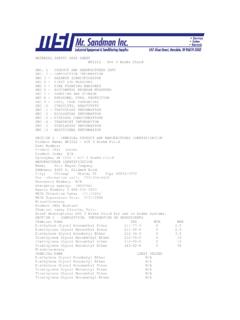
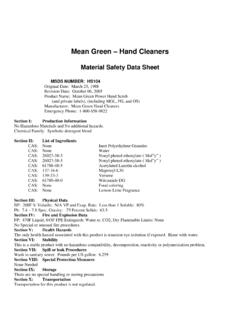

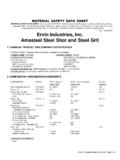
![SAFETY DATA SHEET [formerly MSDS] 1 PRODUCT …](/cache/preview/b/8/1/9/4/d/b/f/thumb-b8194dbf3233d95ad71de2848134ba9c.jpg)
